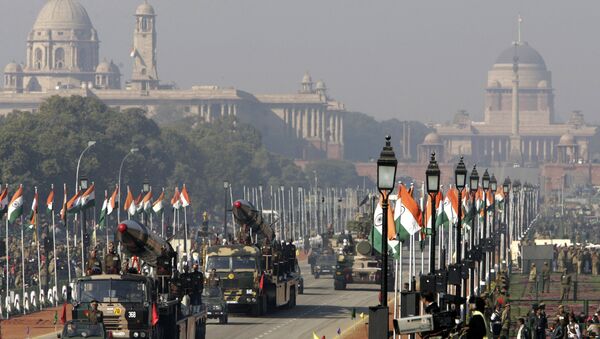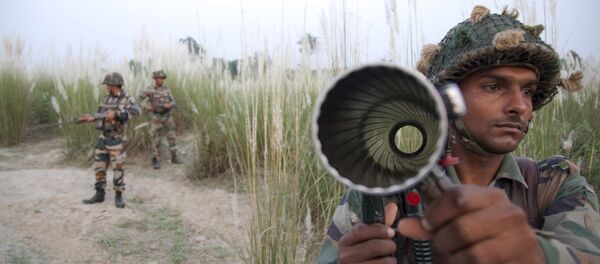"The trajectory of the trial was tracked by a battery of sophisticated radars, telemetry observation stations, electro-optic instruments and naval ships right from its launch till the missile hit the target area with pinpoint accuracy," SFC sources told The Diplomat.
The Agni-I was first developed by India's Defense Research and Development Organization (DRDO) in 1989 but didn't enter service until 2004. It is a single-state missile, meaning none of its components detach after launch, and uses solid fuel technology, meaning it can be pre-fueled before being fired, and is thus ready to be used in anger at a moment's notice.
The Agni-I is also equipped with an inertial navigation system, meaning it uses internal systems such as accelerometers and gyroscopes to track its own location, rather than requiring an external guidance system. It has an operational range of up to 560 miles and can carry a warhead as heavy as 5,500 pounds.
Named for the Vedic god of fire, Agni-I is the father of the Agni family of nuclear and nuclear-capable missiles. The newest member of the missile family, the Agni-VI ICBM, is still in development by DRDO. SFC fields approximately 75 Agni-I launchers, and last tested the missile in November 2016.
The aggressive expansion of the Agni program has coincided with worsening relations with New Delhi's primary geopolitical rivals: China and Pakistan. All three nations have experienced strong economic and military growth in recent years, along with increased tensions and border friction.
China and India are the only nations to maintain the "No First-Use" policy, where they pledge not to use nuclear weapons under any circumstances, except as a response to another state using them first. The remaining members of the "nuclear club" opt for the "Mutually Assured Destruction" policy, where they can use nuclear weapons to defend themselves or their allies from invasion.
With the Agni-V three-stage solid fueled ICBM, last tested in January 2018, India also seeks a reliable second-strike capability: the ability to assuredly respond to a nuclear attack with one of their own.
They intend to accomplish this by developing a multiple independently targetable reentry vehicle (MIRV) for the Agni-V, meaning the missile will carry multiple warheads that can strike at multiple targets with a single launch. MIRV-equipped missiles are effectively immune to anti-ballistic missile systems, but India has yet to demonstrate a combat-capable one.
The Agni-IV intermediate-range ballistic missile was also tested in January 2017, and the test was similarly successful. The Agni-VI, once it concludes development, will expand India's nuclear range to cover Australia, Africa and Western Europe.





